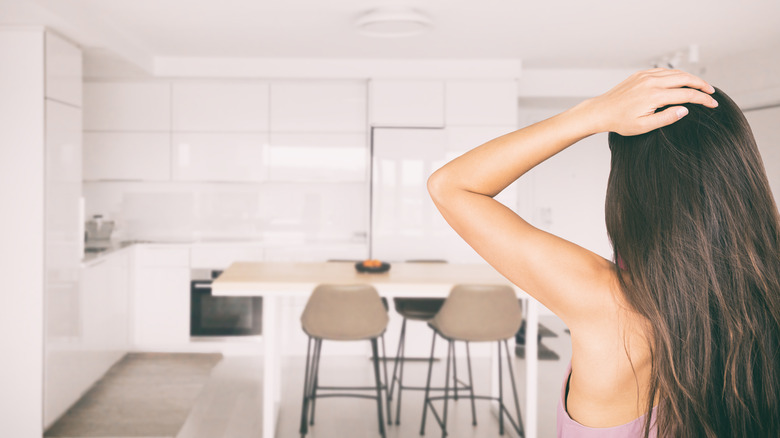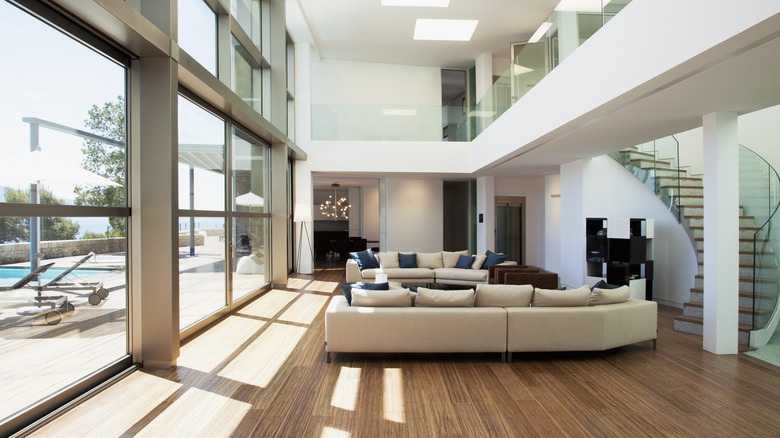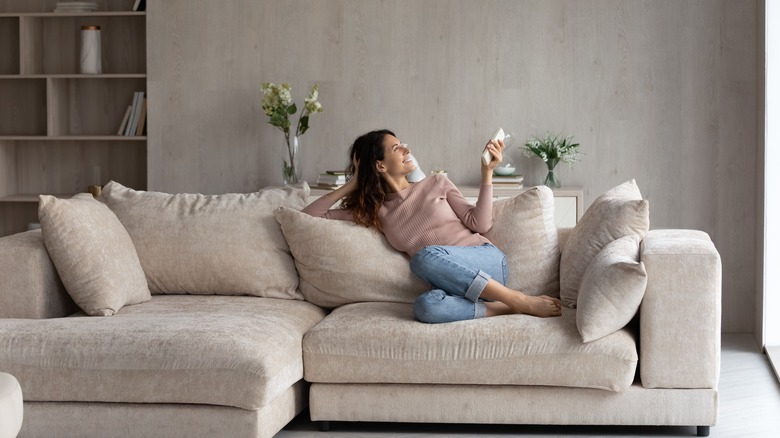How To Combat Decoration Anxiety And Make A Plan You Can Stick To
Are you one of the many people that love to decorate? Every year, there's another room of your home you're hoping to break down, redesign, and refresh. For some people, there's a constant need to make changes and updates, sometimes putting yourself in a situation where you're never really happy with what you've created. You may feel that your vision is authentic and has come to light, but something just pushes you to start over and redo it for yet another time.
Decorating is not just a form of adding beauty to your surroundings but also a type of therapeutic experience that helps with self-expression and being true to yourself. Others may suffer from a condition called decoration anxiety, where it seems like you cannot stop tinkering with your design no matter how much your friends love it or it fits with your original goal. Are you the type of person that cannot find a good spot to stop? You may have decoration anxiety, and creating a plan for your next project may be critically helpful to your overall mental well-being and your home decorating budget.
Define an endpoint
For some individuals, decorating the interior of a living room is an ongoing, endless process. Perhaps you painted the walls and added new floors in January, a new rug went down in June, and you are planning to update the furniture in the fall, which could lead to a new paint color. This type of ongoing loop of decorating is problematic.
The first step then is to define what the end goal is for your project. Close your eyes to think about this space in a few weeks or months. What is the desired look and function of this space? Have a defined goal to work toward before you even get started, as that can help reduce the amount of redoing. When you have a vision in your mind, you train your brain to recognize that, and once that vision is physically present in front of you, it's time to stop. You did it, and now you need to move on instead of making more changes.
Create a visual look to your plan
Just having an idea of what this room will look like is a starting point, but go further and really bring the vision to life. One way to do this is by building a vision board, where you'll cut out photos, print off some pictures you find online, and even grab some product images of the furniture you'll purchase for the space.
Take that another step forward by creating a sketched-out design of your space. The floor plan should outline where items are going as well as what each area will function as within the room. This is not the time to worry about color coordinating or which style you plan to use. You just want to see what the space should look like, to some extent, when you know you'll reach the endpoint. As you work through the redesign of your space, you'll see the progress being made. Ultimately, you'll see the vision come to life, and that helps to give you a sense of pride and accomplishment.
Find out why you're decorating
No one is likely to refute your decision to pull down the '70s paneling out of your living room, but if you're redoing your space over and over again because you cannot seem to get the color hue just right, ask yourself why. A good starting point for that is to understand whether you're using decorating to distract you from something unpleasant or undesirable or due to an attraction, which means you're truly interested in learning and growing from the experience and improving the space.
Decorating could be occupying your mind as a way to keep busy, so you don't have to think about the stressor in your life. It may not bring you joy to struggle with flooring samples and overwhelmed contractors, but it's distracting you enough to help you avoid the frustration, pain, or overwhelming "thing" you just don't know how to deal with right now. To find out if this is behind your endless decorating, stop doing any updating for a while. Simply leave things be for a few weeks, and allow yourself to feel the emotions, frustrations, and even the sadness that could be fueling your relentless pursuit of the perfect room design.
Stop getting stuff done
Another factor that could be fueling your decorating anxiety is the feeling that, by doing something, you're "getting stuff done." It's a common belief among many people that in order to be accomplished or achieve your goals, you need to be working or doing something. The thing is, doing nothing is something. Are you confused?
Not doing anything, just being present, is doing something. It allows your brain to enter a resting phase and allows you to clear your mind of whatever is there. It may allow you to enjoy some peace and, for some, work through those hardships so that you can feel some sense of relaxation. It may feel impossible to just stop decorating or being busy or that you're wasting your time doing nothing, but taking some time off and forcing yourself to stop working could be a game changer for you. What about the unfinished spaces in your home, though? That's okay; let them stay that way. Sometimes the flaws or imperfections in a space make it truly unique and special to you and your family.
Find a new way to relax
Decorating your home can be a passion-filled process that is healing when it allows you to express yourself. Yet, it's important to be honest with yourself. Are you just decorating because you want something to do that seems valuable? Try to fill your time with other artistic or peace-filled activities to bring more value in life. This could include spending time in nature. It may mean walking to a park and listening to the birds. For some, painting, sculpting, or becoming a movie buff that knows every line of 1940s movies is the ideal goal.
Interior design and decorating is a process of making your home you, but don't let defining that space and creating it define you as a person. Create a plan, achieve that goal, and then move on to something else valuable in your life or find a new creative adventure to start on instead. And, if you are battling anxiety from these changes, it may be beneficial to speak to a therapist.





